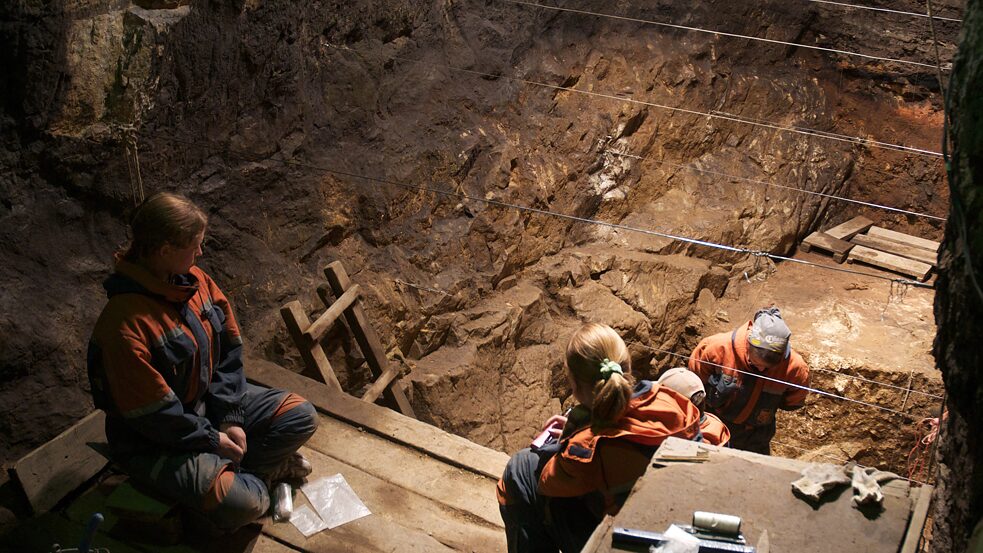
The Neanderthal in us
When “modern humans” emerged from Africa to settle in Europe and Asia, they came across other hominins living there at the time.

In some regions these close relatives lived alongside and with each other for a long time – and there is evidence that they also had children together. Some of the genes that Homo sapiens acquired from Neanderthals and Denisovans by this means have proved very useful and are still around today.
Two examples: one in three women in Europe nowadays has a genetic form of the receptor for the hormone progesterone, which originates from Neanderthals. These women have fewer miscarriages – and therefore on average more children. People native to the Tibetan plateau have inherited a special gene variant from the Denisovans. It limits the haemoglobin levels in the blood, which is probably what makes it possible to live in those extreme, low-oxygen altitudes in the first place.
The language of Neanderthals
Scientists today believe that Neanderthals were also able to speak. At least they had the anatomical requirements for it: the analysis of a small bone 60,000 years old shows that the hyoid bone of a Neanderthal is formed similarly to that of humans today. That’s important because lots of tendons and ligaments that ensure the mobility of the tongue are attach to this bone. The genes needed for speech were also already present in Neanderthals. Certainly, Neanderthals were able to pass on complex knowledge to other members of their species. This can be seen from many of their skills – for instance making complex tools, using fire or hunting large animals in groups.

The anatomy of the hyoid bone (shown in red) plays a key role in speech.
The first artists
For a long time the Neanderthals were considered clumsy and not very intelligent – maybe because of their heavier body structure in comparison to Homo sapiens. But it isn’t just “modern humans” who can think abstract thoughts and create art: Neanderthals were doing cave paintings in what’s now Spain over 64,000 years ago. This art made with red and black pigments consists of lines, dots, discs and handprints. To achieve this, the creators of these artworks first had to arrange for a light source, mix paints and select a suitable wall. The ability to think in abstract terms and create art is something that for a long time only “modern humans” were thought capable of. Now we know that Neanderthals could do that too.
This handprint of a Neanderthal in the Maltravieso cave in Western Spain is around 66,000 years old, which makes it at least 20,000 years older than the earliest traces of “modern humans” (Homo sapiens) in Europe.
A new relative
A tiny fragment of finger bone caused a scientific sensation in 2010. At the Max Planck Institute for Evolutionary Anthropology in Leipzig, Johannes Krause and Svante Pääbo sequenced DNA from a tiny piece of a 70,000 to 80,000-year-old finger bone. It came from the Denisova cave in Southern Siberia. The big surprise – the girl whose bone it was belonged to a species of human hitherto completely unknown, which we now refer to as the Denisova hominin. In 2012 the girl’s complete genome was sequenced with the help of advanced paleogenetic methods. This is an important step in the research of human history: Just like Neanderthals and “modern humans”, the Denisova human developed from homo erectus – making it their closest relative.

The Denisova cave has turned out to be a unique archaeological site. Humans probably lived here as far back as 280,000 years ago.

Cooperation partners

|

|
You might find this also interesting





